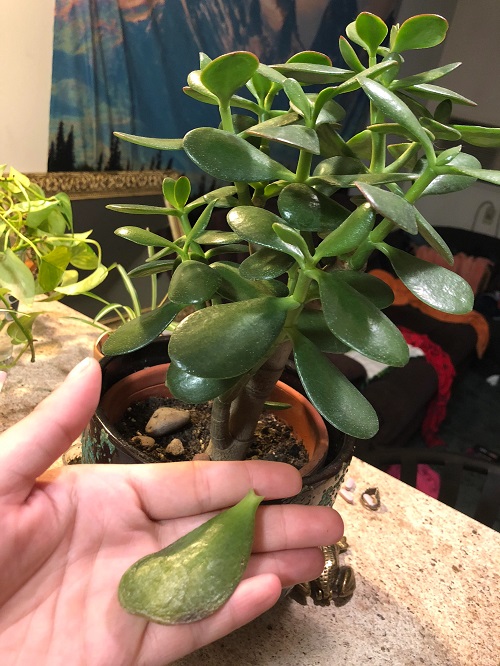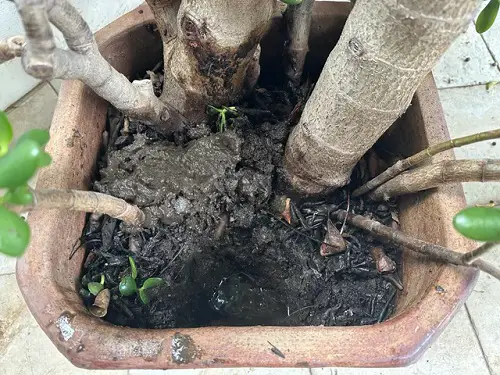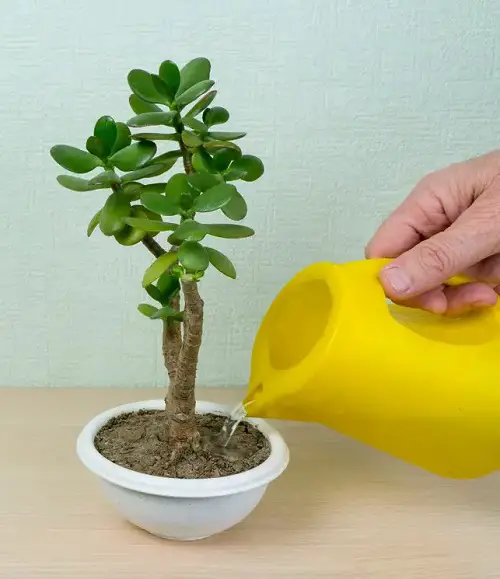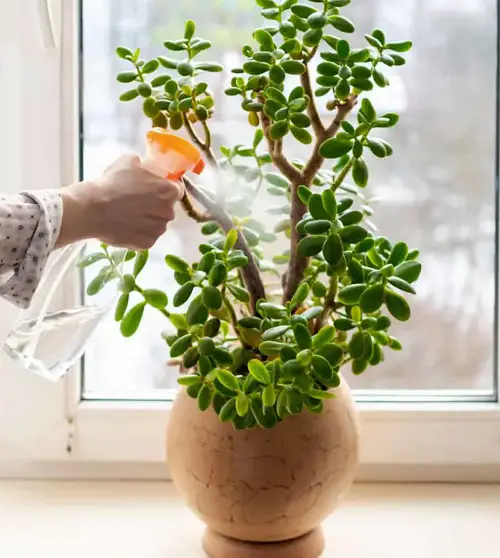Are you worried about your Jade Plant Leaves Falling Off? Well, here are the main reasons, along with their detailed solutions!
Have you noticed your jade plant leaves falling off recently? It is a definite cause of concern because if not addressed promptly, it can result in its untimely death.
Jade Plant Leaves Falling Off: Major Reasons and Solutions
1. Overwatering
Since jade plants are succulents, they store water in their thick leaves and stems. When the soil is consistently kept too moist, the roots start to rot, which leads to the leaves falling off.
Solution: Allow the soil to dry out well between watering spells. Use a well-draining potting mix and a container with drainage holes to make sure the plant isn’t soaked for long hours.
2. Poor Drainage

These plants need well-draining soil to prevent waterlogged conditions, which can be hazardous to their growth. If the soil retains too much water, it may cause the roots to suffocate and lead to leaf drop.
Solution: Repot your jade plant in a well-draining container or a succulent or cactus mix.
3. Lack of Sunlight

Jade plants thrive in bright, indirect light or filtered sunlight. Inadequate sunlight weakens the plant structure and can cause leaf drop.
Solution: Place your jade plant where it can receive 4-6 hours of bright, indirect sunlight daily. A south or west-facing window is perfect. Also, rotate the plant occasionally to ensure all sides receive enough light.
Find out why Rubber Plant Leaves curl and fall off here
4. Temperature Extremes
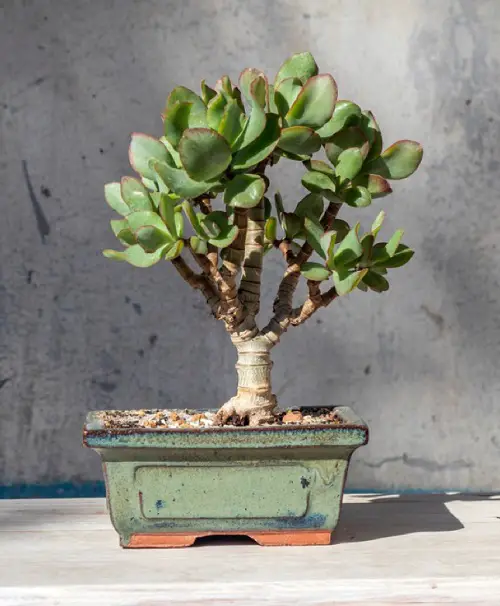
Jade plants are sensitive to both extremes. Exposure to high or low temperatures or drafts can cause stress and lead to leaf drop.
Solution: Keep your jade plant in a stable environment with temperatures ranging between 60°F to 80°F (18°C to 27°C). Avoid placing it near radiators, air conditioners, or drafty windows.
5. Pests and Diseases
Pests such as spider mites, mealybugs, and scale insects can infest jade plants, causing damage to leaves and leading to their eventual drop. Fungal diseases from overwatering or poor ventilation may also be one reason.
Solution: Inspect your jade plant regularly for signs of pests. If infested, treat them immediately with insecticidal soap or neem oil. Make sure they get proper ventilation to prevent fungal issues and avoid overwatering.
6. Underwatering
While overwatering is a common issue, underwatering can also lead to leaf drop. Jade plants prefer their soil to dry out between watering, but if they consistently lack water, the leaves may shrink, fade, and eventually fall off.
Solution: Adjust your watering routine to ensure the soil is adequately moist when you water. Find a balance to prevent both overwatering and underwatering.
Discover Money Tree Leaves Turning Yellow in this Article
7. Nutrient Deficiency
Insufficient nutrients in the soil can result in weak and yellowing leaves, leading to leaf drop. Jade plants require an occasional dose of balanced fertilizer to thrive.
Solution: Feed your jade plant with a balanced, diluted fertilizer during the growing season (spring and summer). Follow the recommended guidelines on the fertilizer package.
Are you worried about Gardenia Buds Turning Brown and Falling Off? Check this Post for Solutions
8. Age of the Plant
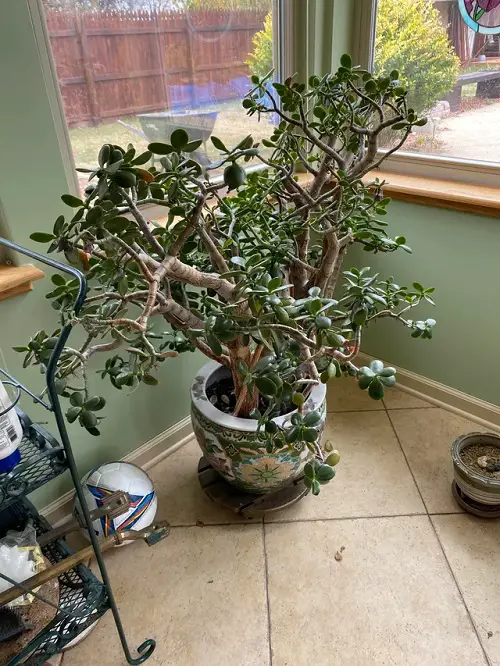
Age is another factor that determines when the leaves start to drop. At this stage, there’s nothing you can do. Just make sure that you are not hindering its growth and placement as this will speed up the dropping of leaves.
Sometimes, leaf drop can occur after transplantation or changes in seasons, particularly as the plant adapts to shifts in temperature and light.


